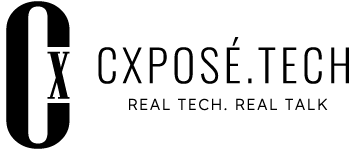 From ‘Noted’ to Three Paragraphs
From ‘Noted’ to Three Paragraphs
Gen Z thinks speed equals efficiency, while older generations think structure equals professionalism. I’ve seen it firsthand. A Gen Z employee sends me a WhatsApp message: “Noted.” That’s it. No context. No elaboration. Just “Noted.” Meanwhile, a senior leader types out a three-paragraph email outlining expectations, references, and follow-up steps, only for the Gen Z employee to skim through it and reply, “Okay.” Both walk away thinking the other is inefficient.
Now, let’s talk about the root cause.
Older employees like me were trained in environments where authority and structure ruled. Clear, lengthy emails, in-person meetings, and meticulous follow-ups were signs of professionalism. Gen Z? They grew up on instant messaging, emojis, and voice notes. To them, shorter isn’t rude; it’s efficient. Took me a while to unlearn and learn to be hybrid in the ever evolving environment. At CARSOME, I saw these differences play out on the ground in the Philippines.
I had team leaders who wanted detailed weekly reports and 20-minute calls to discuss updates, while my younger team members wanted to send a quick voice note on WhatsApp and move on. It wasn’t about right or wrong – it was about adapting to a world that moves faster than ever. The moment you accept that communication evolves, not declines, you stop wasting time trying to prove your method is superior.
Reverse Mentorship Key to Cross-Generational Understanding
Let’s be clear, you can’t force a Baby Boomer to text like a Gen Z, and you can’t expect a 24-year-old to write emails like a CEO from the 90s. The key here isn’t making one side conform to the other. It’s about setting communication norms that remove ambiguity. Here’s how I fixed this in CARSOME Philippines:
Clear Rules on Communication Channels
WhatsApp – urgent, fast responses
WorkChat – daily operations and project discussions
Email – formal, documented communication
This way, everyone knew where to expect what, and no one had to “guess” the tone of an email or a message. I told my senior leaders: Stop assuming “Noted” means someone doesn’t care. If you need elaboration/context, ask for it. I told my younger employees: Your boss isn’t a mind-reader. If you understand the task, tell them what you’re doing next. If you don’t, ask them. Context, context.
Reverse Mentorship (You Teach Me, I Teach You)
I have open meetings together with my older managers with younger employees so they could learn how each other work (real hard questions to each other, in front of each other). Suddenly, my senior leaders were using digital tools like Google Drive in real time instead of waiting for email attachments (you know when they need to download it and send instead of attaching the link immediately), and my younger employees started drafting more structured reports. You don’t fix the generational gap by debating who’s right. You fix it by aligning expectations and making both sides see value in each other. Consistent one to one helps a lot too.
Satisfying Both Digital Natives and Traditionalists
I have personally experienced seeing an old-school manager stare at a WorkChat/Google notification like its alien technology. In my experience these past 15 years, I have encountered team members that refused to move away from emails and downloading attachments, while some of my younger team wanted to handle everything on WhatsApp/WorkChat. The solution? Hybrid adoption with clear expectations.
One Centralised Work Hub
We moved all essential updates to a single Google Sheet dashboard (coincidentally built by one of my younger team members). No matter the generation, everyone had the same access to information. The young ones loved the real-time updates. Senior leaders liked that it was structured and trackable.
Asynchronous Workflows
Older employees liked structured morning check-ins, while Gen Z wanted flexible responses. We implemented daily standups via WorkChat so updates were there without requiring unnecessary calls (I personally do not like meetings when a call/message/email would suffice).
Office Hours Instead of Endless Emails
Instead of chasing people across five different channels, we set fixed office hours where employees could come in and clarify things in real time, and specifically on certain days. As not to disrupt our daily operations too much. Guess what? Fewer emails. Fewer misunderstandings. More action.
Most companies blame technology for workplace misalignment, but the problem isn’t the tool. It’s the leadership not setting the ground rules. Also, I keep reminding my team that I detest misunderstanding, if you are not clear, and you refused to get clarifications, then you are the problem.
Real Work, Real Results
You ever try to teach someone who’s been doing business for 20 years how to use a new tool? It’s like telling an F1 driver to ride a bicycle. They know how to get the job done their way, and they don’t see the point in changing. At CARSOME, I’ve had experienced managers refuse to use our new tools, saying “the current way is fine.” Meanwhile, our younger employees were automating half their tasks and getting results twice as fast. So, how do you get older employees to adopt digital tools?
Use Real Work, Not Training Sessions
We didn’t force employees to attend tech workshops; we made them use WorkChat for actual sales updates. Instead of a boring tutorial, we made every department track their OKRs on it. One look and you know whether we are making revenues or losing a sale.
Bite-Sized Tutorials
No one wants to sit through an hour-long training on the new dashboard. Instead, we created 15-minute training sessions that employees could attend without disrupting their work. Multiple slots designed for their convenience.
Gamifying Digital Learning
We rewarded employees who actively used the new tools; I personally use public shoutouts. Screaming, “Well done, keep this update coming!” to any of my employees when they do something right on the new dashboard. You’d be surprised how fast people adapt when there’s recognition involved. Even a thumbs up emoji validates them.
Tracking Adoption & Course-Correcting
We didn’t just assume people were using the tools. We tracked engagement and followed up with those who resisted change. The result? More efficiency, fewer outdated work habits, and a team that actually spoke the same digital language (as close as possible).

 Freedom Over Possessions
Freedom Over Possessions Digital Natives vs. Traditional Communicators
Digital Natives vs. Traditional Communicators From ‘Noted’ to Three Paragraphs
From ‘Noted’ to Three Paragraphs When Generational Communication Preferences Impact Collaboration
When Generational Communication Preferences Impact Collaboration Direct vs. Hierarchical
Direct vs. Hierarchical



